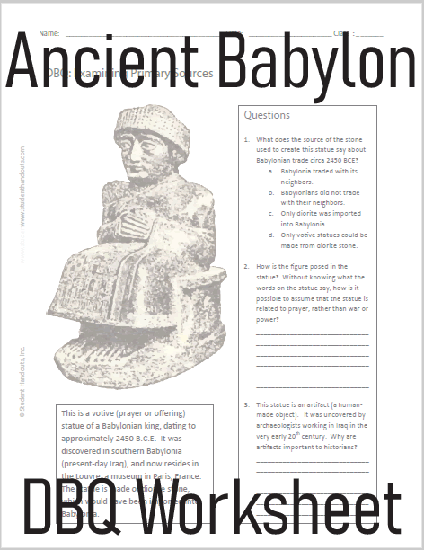| Ancient Babylonian Statue DBQ Worksheet |
|---|
| www.studenthandouts.com ↣ World History ↣ Ancient Near East ↣ Ancient Near East Worksheets |
 |
   |
|
This is a votive (prayer or offering) statue of a Babylonian king, dating to approximately 2450 B.C.E. It was discovered in southern Babylonia (present-day Iraq), and now resides in the Louvre, a museum in Paris, France. The statue is made of diorite stone, which would have been imported into Babylonia. Click here to print. Questions 1. What does the source of the stone used to create this statue say about Babylonian trade circa 2450 B.C.E.? a. Babylonia traded with its neighbors. b. Babylonians did not trade with their neighbors. c. Only diorite was imported into Babylonia. d. Only votive statues could be made from diorite stone. 2. How is the figure posed in the statue? Without knowing what the words on the statue say, how is it possible to assume that the statue is related to prayer, rather than war or power? Answers will vary. 3. This statue is an artifact (a human-made object). It was uncovered by archaeologists working in Iraq in the very early 20th century. Why are artifacts important to historians? Answers will vary. |
| Ancient Near East Books and Films | Ancient Near East Outlines and PowerPoints |
| Ancient Near East Maps and Pictures | Ancient Near East Study Games |
| Ancient Near East Miscellany | Ancient Near East Worksheets |
| www.studenthandouts.com ↣ World History ↣ Ancient Near East ↣ Ancient Near East Worksheets |








